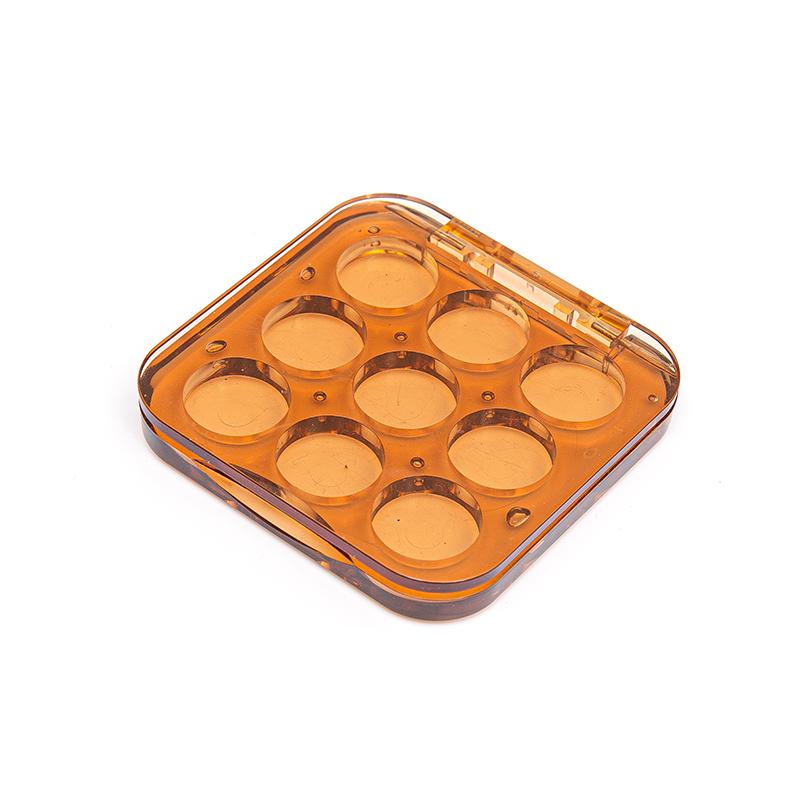What Materials and Features Are Common in Empty Eyeshadow Containers?

In the cosmetic industry, packaging is an essential factor that combines aesthetics, functionality, and safety. Empty Eyeshadow Containers are an integral part of this packaging, providing storage for powders, creams, or pressed pigments before they reach consumers. These containers influence not only the usability of the product but also the presentation, making them an important consideration for cosmetic brands and manufacturers.
A key aspect of producing Empty Eyeshadow Containers is material selection. Containers are typically made from plastic, metal, or a combination of both. High-quality plastics offer durability, lightness, and resistance to breakage, while metal components can provide a sleek and premium feel. Manufacturers ensure that the materials are safe for direct contact with cosmetic products and do not react with pigments or ingredients. This careful selection guarantees that the containers maintain product integrity and safety.
Design is another critical factor for Empty Eyeshadow Containers. The containers must be compact, easy to open, and secure enough to prevent spillage during transportation. Many designs feature flip lids, screw tops, or magnetic closures, providing convenience for both manufacturers and end users. The shape and size of the containers are also optimized for makeup palettes, display racks, and individual use, ensuring versatility in the market.
A Empty Eyeshadow Container factory focuses heavily on manufacturing precision. Molded components need to meet exact dimensional standards to ensure proper assembly and closure. Consistency in production ensures that every container fits lids perfectly, maintains a secure seal, and presents a uniform appearance. This precision is particularly important for bulk orders, where cosmetic brands rely on containers that are identical across production runs.
Customizability is another feature often offered for Empty Eyeshadow Containers. Cosmetic brands frequently request specific colors, finishes, or branding elements such as logos and embossing. Factories accommodate these requirements through techniques like injection molding, coating, or printing. Customization enhances the visual appeal of the containers and allows brands to differentiate their products in a competitive market.
Sustainability has become an important consideration in the production of Empty Eyeshadow Containers. Many factories now use recyclable plastics, biodegradable materials, or refillable designs. These environmentally conscious options appeal to consumers who prioritize sustainable beauty products and reduce the environmental footprint of cosmetic packaging.
Quality control is a central responsibility for manufacturers of Empty Eyeshadow Containers. Inspections include testing for airtight seals, structural integrity, color consistency, and surface finish. By adhering to rigorous quality standards, manufacturers ensure that containers can withstand handling, shipping, and everyday use without compromising the product inside.
Innovation is also present in modern Empty Eyeshadow Containers. Some designs integrate features such as dual compartments, magnetic inserts, or clear lids for better product visibility. These innovations improve user experience and increase the versatility of containers for various makeup applications.
Empty Eyeshadow Containers are more than just simple packaging; they are carefully designed products that balance safety, aesthetics, and functionality. Through thoughtful material selection, precision manufacturing, customization, and sustainable practices, manufacturers provide containers that meet the practical and visual needs of the cosmetic industry. Their role ensures that makeup products are protected, presented attractively, and ready for consumer use.
- Art
- Causes
- Crafts
- Dance
- Drinks
- Film
- Fitness
- Food
- Jocuri
- Gardening
- Health
- Home
- Literature
- Music
- Networking
- Alte
- Party
- Religion
- Shopping
- Sports
- Theater
- Wellness
